

1989 - A Year of Change |
Apple's Product Lineup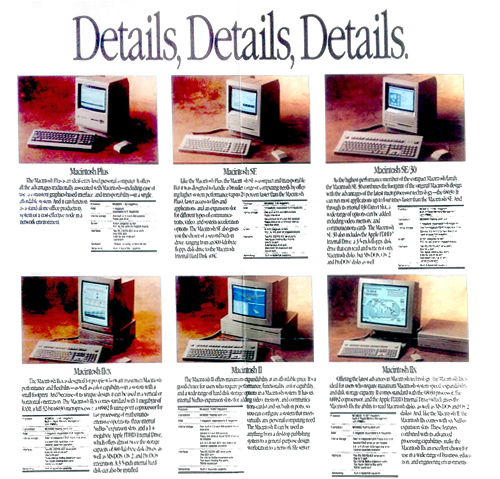 Product Plan 1989Success! This is the year Kodak finally gave up on Still Video and started making digital products. This after hiring an outside industry consulting firm to help them make up their minds. Guess what? The consultants predicted the demise of the SVF and the exploding market for digital input, storage and output products for computers. You have to wonder if the two years lead they could have had, would have better positioned Kodak to lead this exciting new digital imaging market instead of constantly reacting to it. As you can see from the brochures on this page, many options were already out on the market by this time. Notice the Difference between 1988's product plan and this one. 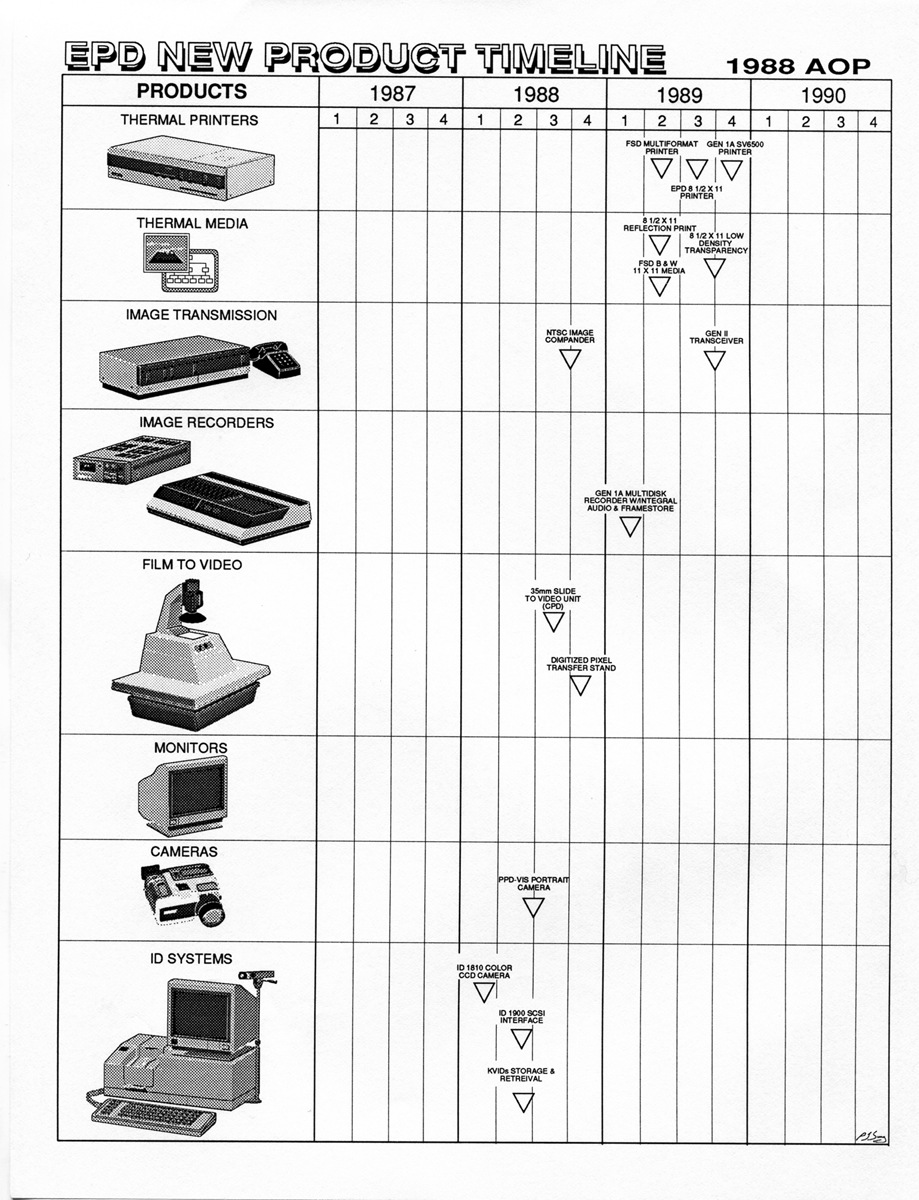
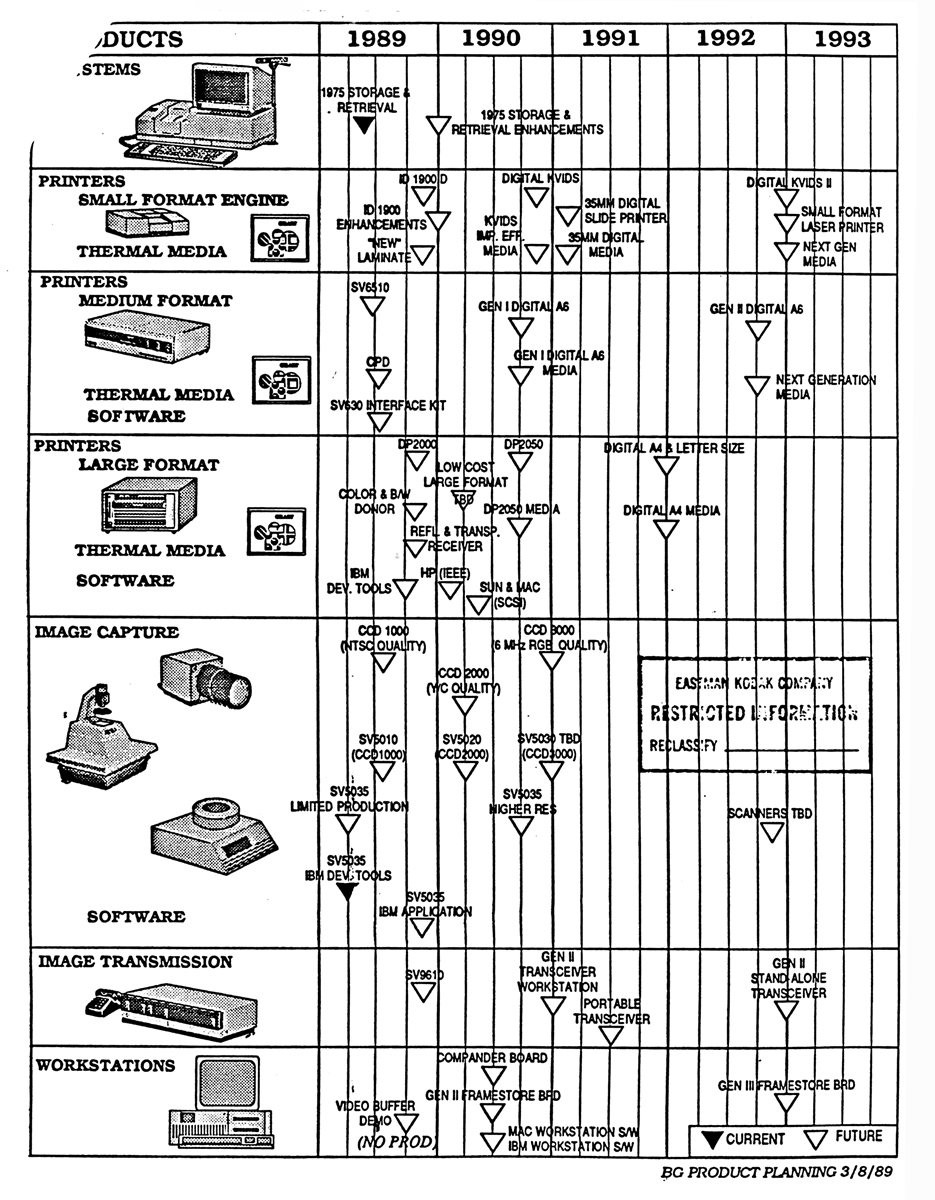
Click Image to View (requires PDF plugin) or Downlad a PDF of the full Document MacWorld Expo San FranciscoKodak first booth in a computer show was at the January Macworld 1989. We had a 10x10 booth with hardly any signage and two tables with white cloths. Located in the cheap section against the back wall, we still had a good bit of traffic after word got out about what we were showing. On one table we had the SV6500 connected to a PC with the SV63 IF. We printed a lot of images for people. Once the word got out the traffic steadily grew. On the other table, I was demonstrating the Hypercard stack I had developed, on a Mac II with a SV7500 Multi-Disk Recorder connected to the serial port, and an RGB monitor displaying the images from the recorder. It was one of the first truly interactive applications on Hypercard and drew engineers from Apple in droves. I probably collected more than 30 Apple engineer's cards alone. The realtor database scenario was very popular. I'd enter in the number of bedrooms, baths, price range, etc., Hypercard would find matching records and bring up the photos of the home on the monitor connected to the SV7500. The show ended on Super Bowl Sunday and San Francisco won. The show was pretty dead and everybody found themselves from hanging around the booths that were selling video products because they had the game on their monitors. The streets of SF were pretty wild that night as I watched from my hotel room above Union Square. Within a few weeks of the show EPD announced the cancellation of the SV7500 Still Video Recorder program. Eastman Archives Digital Image Retrieval System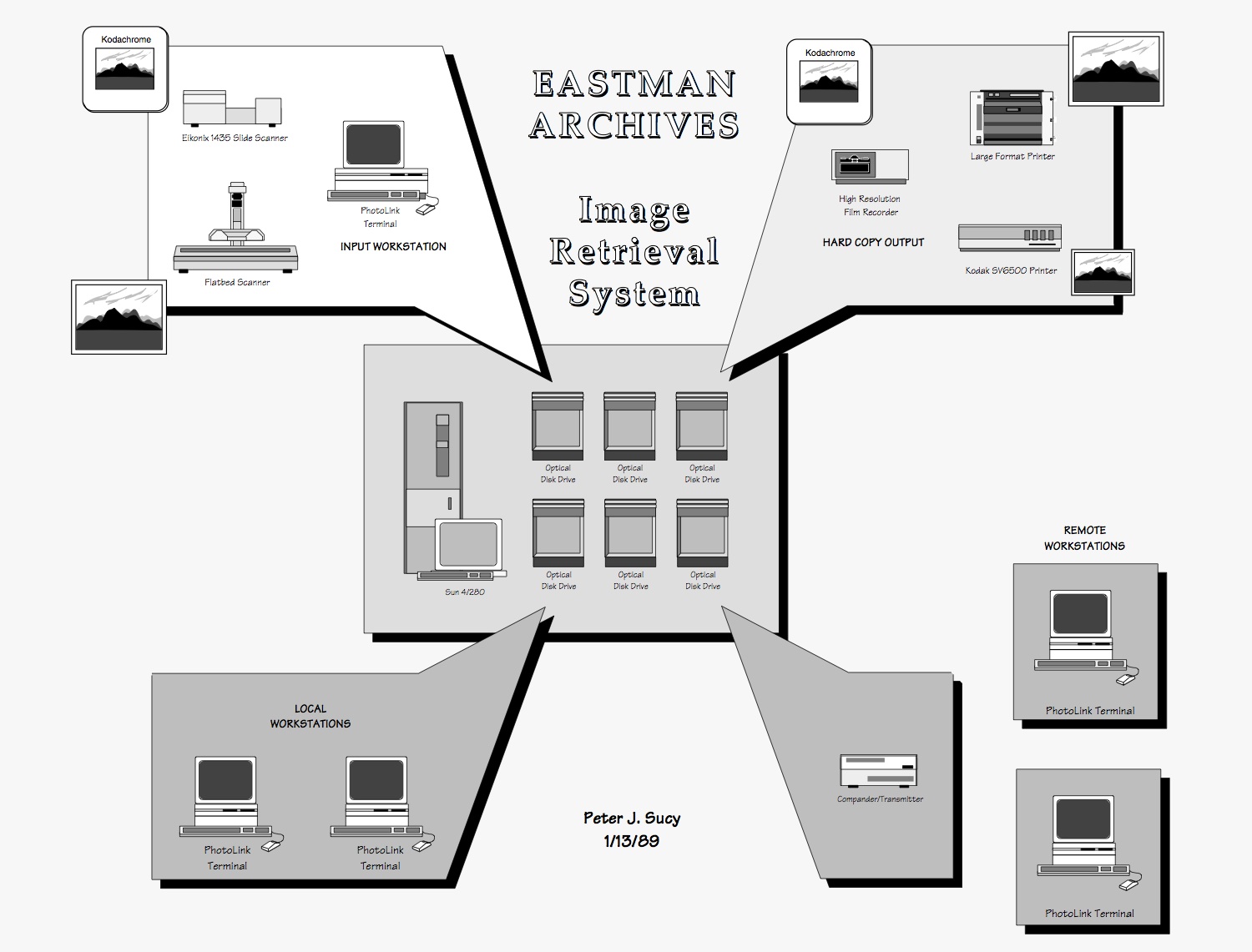
Click Image to View (requires PDF plugin) or Downlad a PDF of the full Brochure A frequent visitor to my lab was Mark Henry. Mark worked for Ray DeMoulin in Professional Photography and was looking for digital image storage/retreival systems for clients like Image Bank. This gave me the idea of pulling products from a wide range of Kodak divisions to create a digital photo archiving system that would meet the needs of clients like Image Bank, but also help large photo collections, like the Smithsonian, Getty Images and the George Eastaman to begin converting their collections to digital, opening them to online access. The WWW was still a few years away, but dialup access to databases and such were being done in other fields. To make it commerically viable, I envisioned licensing our Transbit Image Compression algorithm (and high speed processor boards to do the crunching) to AT&T (before the breakup) for compressing images for transmission over phonelines) they would in turn sell these to people who need to transmit images, photojounalism, photocollections, museums, schools, etc. There would be a penny or two charge for each image compressed which would be shared between ATT and Kodak. The Transbit algorithm was one of the best compression technologies and was developed in our research labs. Used in the 9600 Video Transceiver, which would win an Emmy for enabling photos of the Tienamen Square uprising this year. First Applications Lab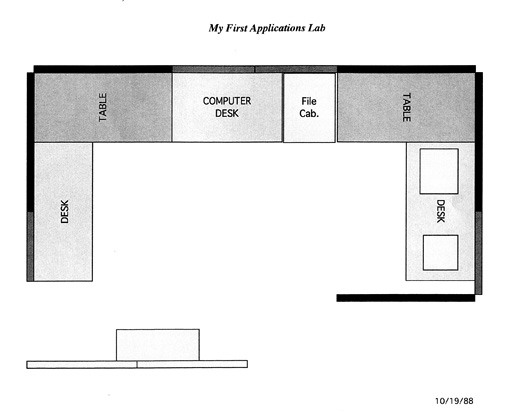 Visit to MIT Media Lab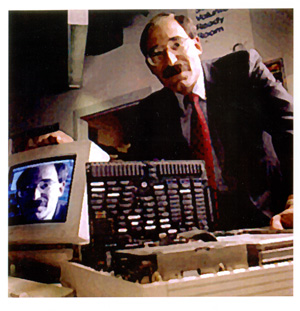
I was invited to travel to Boston with several engineers to visit MIT's Media Lab. It was an exciting opportunity to see what they were working on at the time. In the photo above founder Nicholoas Negroponte stands behind a Macintosh II with a special compression card for creating the first CDROMs. There was work underway on virtual reality, robotics, and much more. Quite inspiring! First Kodak Digital Product StrategyI received a request from Cynthia, our new media marketting person, to put together a digital product strategy to address the Mac imaging sector. Which was the only platform with significant numbers of potential users. The PC platform was a bit slower coming to market with graphics and imaging products beause the operating system didn't support 24-bit color yet. It required a very expensive ATT Targa Board to do imaging on the PC. Pulling my original 1987 Megavision proposal, I updated it to reflect new products in Capture, Storage, Transmission and Output categories. I suggested supporting higher resolutions input and output devices, especially for desktop publishing. It was finally approved later in the year. Amazing, finally a change of direction. Unfortunately, this meant killing most of the Still Video Products, except the printers. 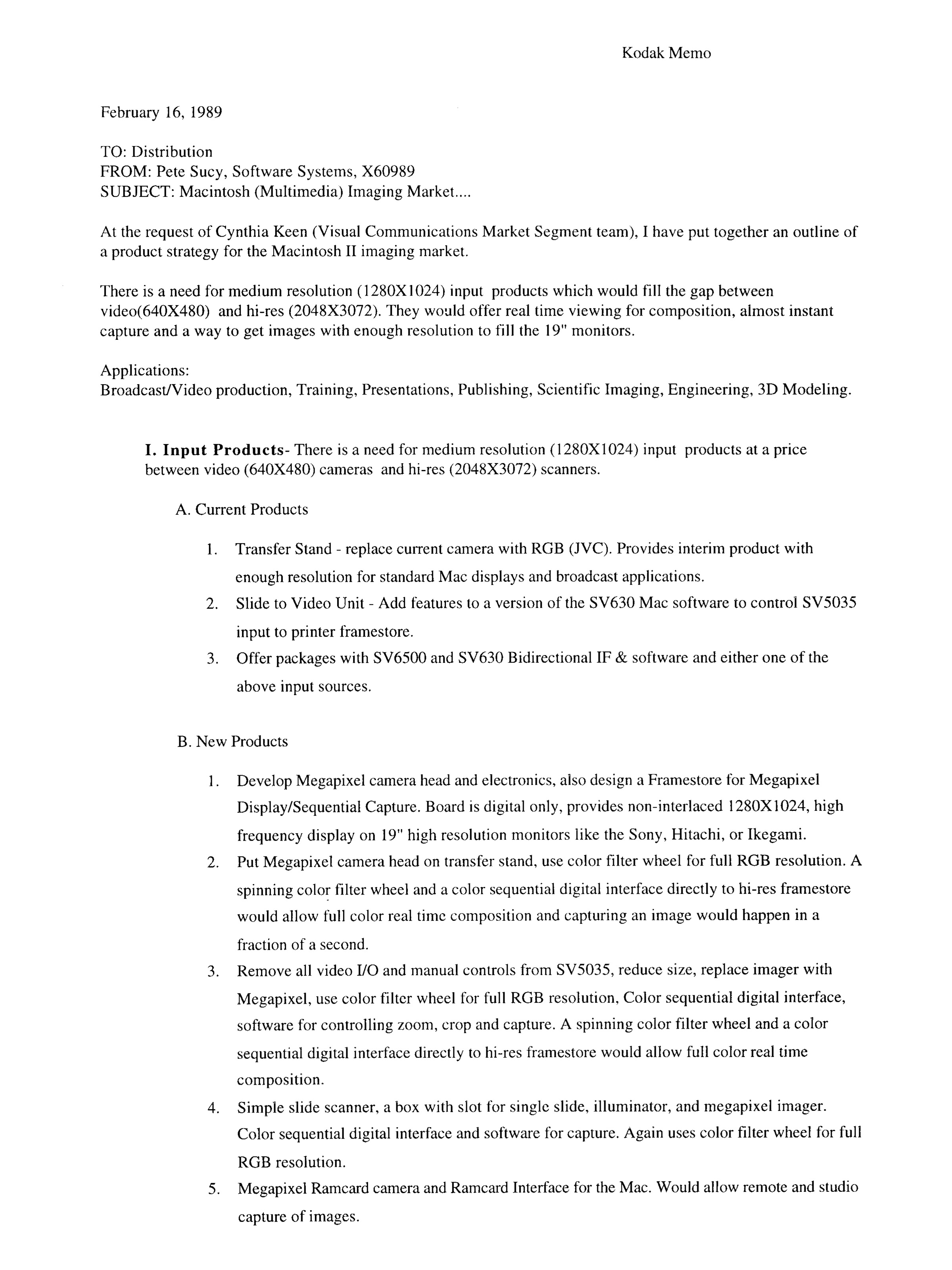
One other request Cynthia made was to develop a sample ad for one of the Mac magazines. I put this together in Illustrator and Pagemaker. I thought it was pretty good, but I don't believe they used it. 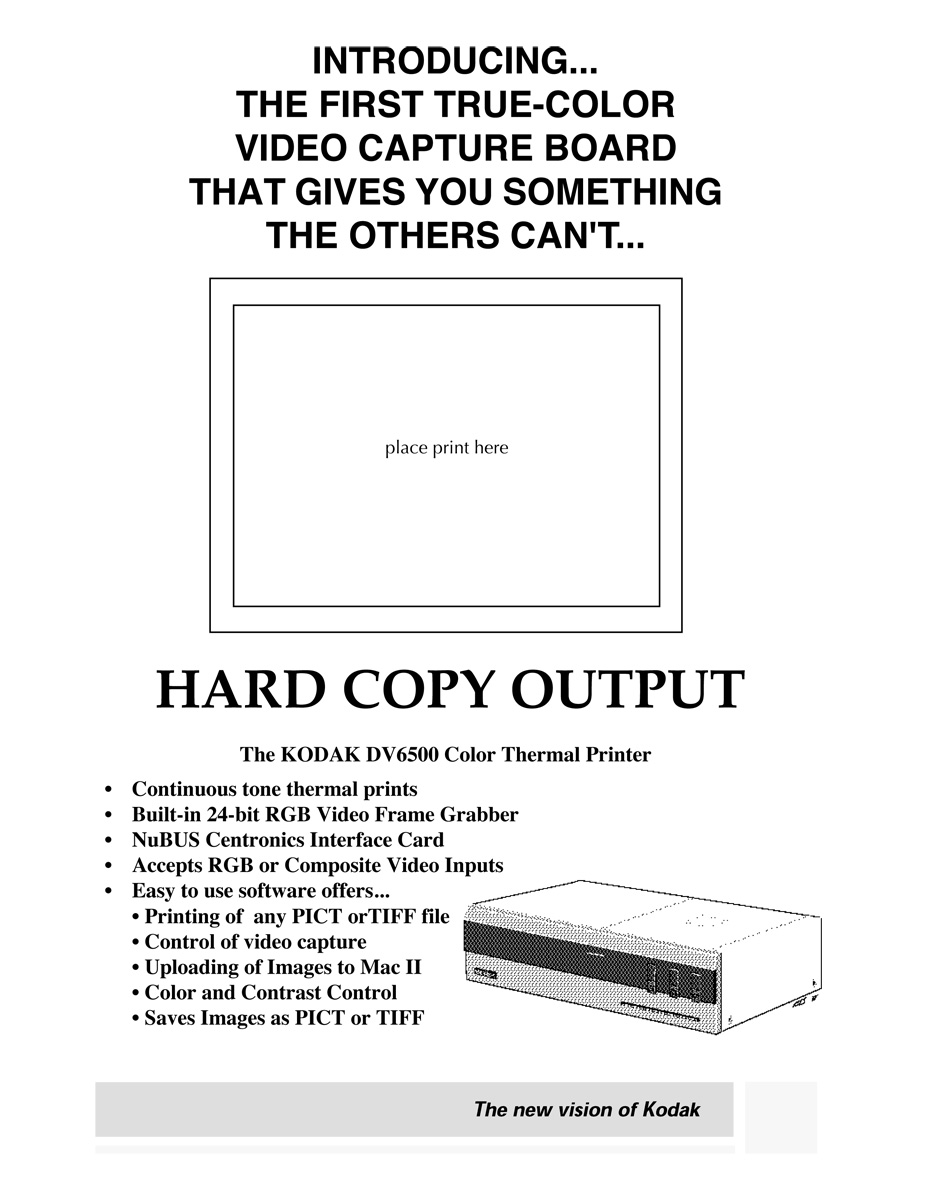
Video Tutorial for TrainingAs we got ready to launch it was time to train the field force on the products. Jukka, Gerry and Jerry did most of the training development and training. I would drop in and several technology presentations to help in this effort. This is a tutorial I wrote to help explain the concept of Video Signals to a field force with little knowledge.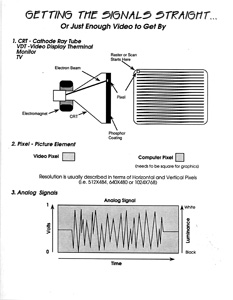 I began to travel a bit more as I was asked to travel to the regions to do some training. Little did I know what was in store for me later on. The sent me to Whittier and Washington, DC to conduct CMR and OEM training. Eating out with the marketing guys wasn't so bad, good talk, good food & many drinks. That is until they tried to get us to split the bill evenly, as a technician we didn't have very large expense accounts. Hardware AnnouncmentsMotorola Annouced the 68040 ProcessorThis latest. more powerful, processor would make it debut in Apple's Wicked Fast Macintosh IIFX which would be introduced late in the year. Barneyscan and BarneyscanXP - the hidden treasure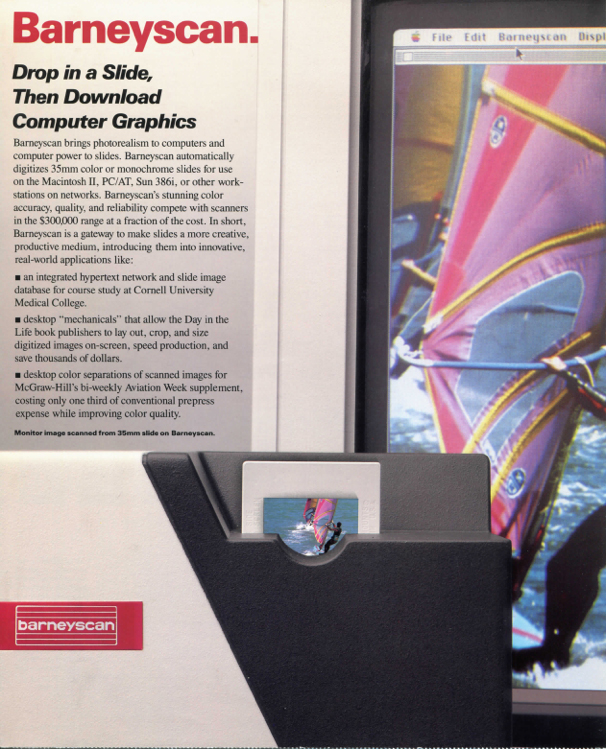 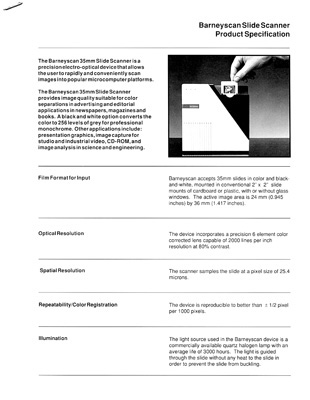
Click Image to View (requires PDF plugin) or Downlad a PDF of the full Document I was given the go ahead to acquire a variety of digital input devices for my growing lab, I purchased a TruScan flatbed transfer stand, and late in the year, the first film scanner for the Mac, the Barneyscan. A white and black cube about 9"w X 12" h X 16" d with a slot and a thumbwheel knob that was supposed to allow you to focus it. It was extremely difficult to use. However, the piece of software that it came with was a jewel, called BarneyscanXP it was actually an early version of what would become Adobe Photoshop. Written by Tom Knoll, the first version of this software I would experiment with was version 0.63a, which fit on a 400K floppy disk. The BarneyscanXP icon in those days was a little image of a 1 hour photo kiosk, file icons looked like rolls of 35mm film. Unfortunately, the software was only usable when a BarneyScan was attached to the computer which required installing a special interface card. It would not run otherwise, so taking it home to experiment with further, was out of the question. Still, that version was very impressive even at this early stage. Curves, levels with histograms, color balance, lasso, rectangle & oval selection, paint brush, nearly all the tools were there from the very start. However, the color dithering algorithm employed was many times faster than PhotoMac's.method and BarneyScanXP introduced virtual memory to the equation. This is a technique where you use the hard drive as additional memory space for the program to store information. This was a huge breakthrough at the time, as the maximum memory of the Mac II was limited to just 8Mb, not quite enough to hold a RBG photo file with the pixel dimensions of 1536 x 2048, which required 9Mb of buffer space. This was significant because the new large format thermal printer under development required an image of that resolution to print an 8 x 10" color photo. The printer also was capable of printing a 10" x 10" image with an image of 2048 x 2048 pixels or 12 Mb's. The Mac already addressed more memory than any other PC on the market could and it still wasn't enough to handle a relatively small file by today's standards. The exception was high end UNIX machines like Sun. This was the platform that marketing had determined was the best fit. Trouble was you could count the number of this category of machine doing imaging work in the hundreds at the time. With the intro of virtual memory & BarneyScanXP, I felt the Mac and desktop publishing was a better market to pursue. When I tried to explain my rationale, several marketing individuals told me that no one with a $3000 Mac would spend what was expected to be $25,000, for the new printer. More about that battle later on. Howtek Scanmaster 35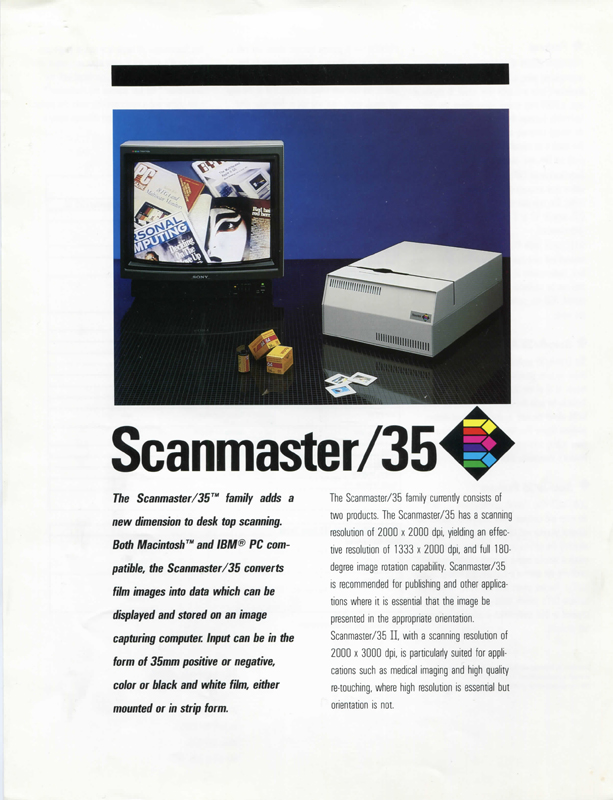
Click Image to View (requires PDF plugin) or Downlad a PDF of the full Document
Eikonix 35mm Scanner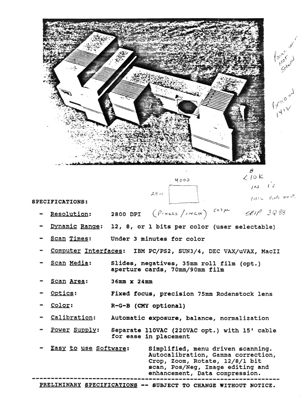 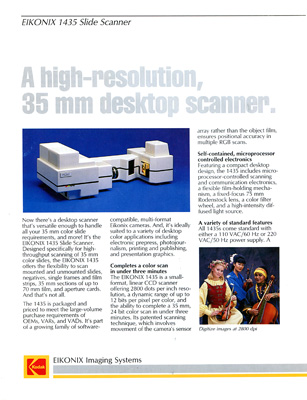 Click Image to View (requires PDF plugin) or Downlad a PDF of the full Document Truvel TZ-3 Scanner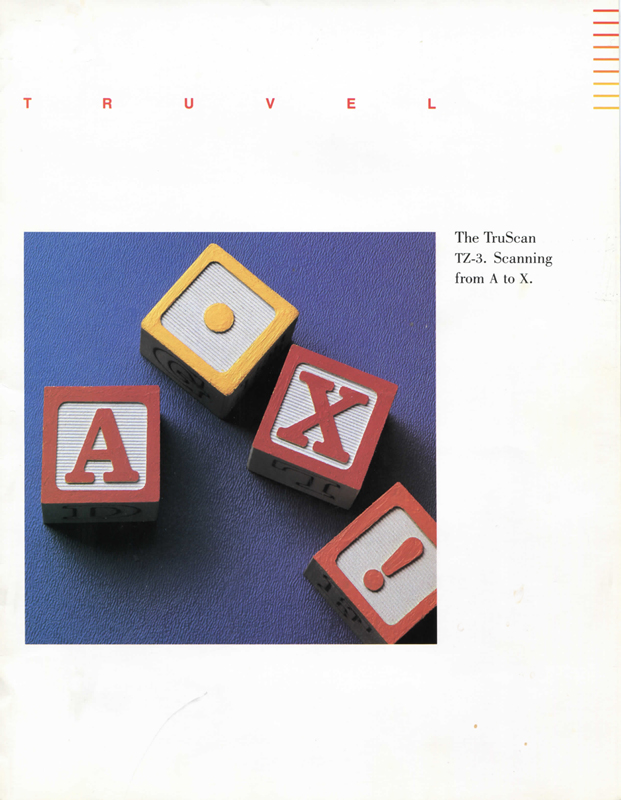 Click Image to View (requires PDF plugin) or Downlad a PDF of the full Document Raster Ops 24-bit Quickdraw Display Card Brochure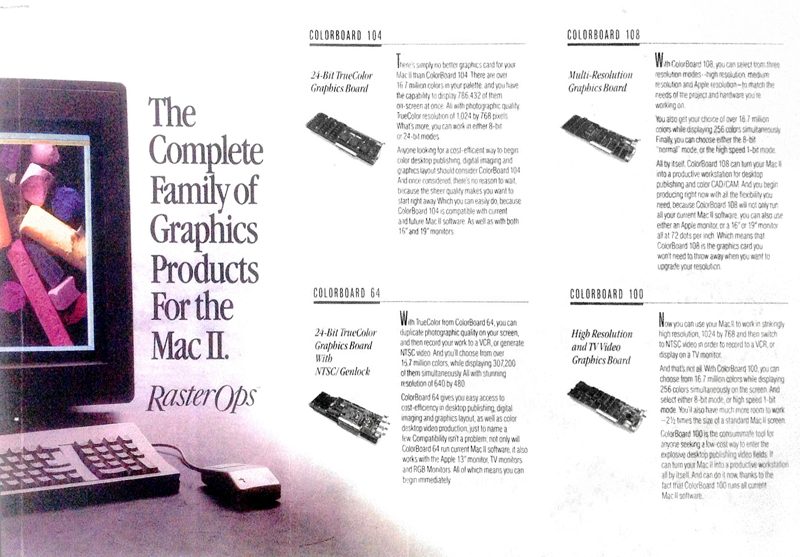
Click Image to View (requires PDF plugin) or Downlad a PDF of the full Document Radius Product Brochures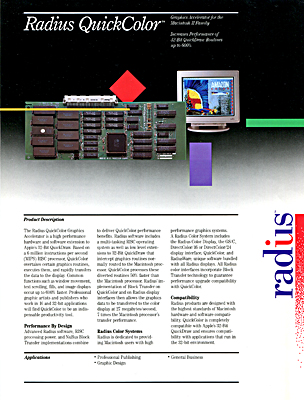 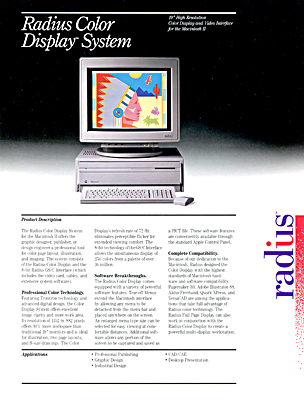
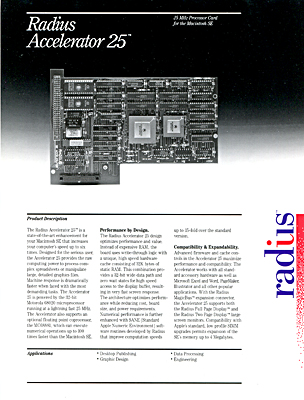
Color Image Editing and Paint ApplicationsSeveral New Color Paint and Editing Programs arrived on the scene. Pixelpaint allowed you to edit 8-bit images with paint tools, while ColorStudio added some image editing tools in addition to being one of the first to support 24 bit color images.Work on Colorsqueeze BeginsJohn Metzger and I, cooked up this idea to create a Macintosh program which would compress color images using the Transbit algorithm. This preceeded the JPEG standard and was capable of compressing an 8Mb file to a few hundred kilobytes with very little loss of quality. Working with Tom, the same developer who did the SV630 software, I began designing the user interface. Supercard (a color version of Hypercard by Silicon Beach Software) made an excellent way to present a very close simulation of how the software would actually look and feel. I'd create a stack with updates to the user interface and send it around for review. Reviewers could make comments and suggest changes right on the Supercard stack. XL7700 Printer Announced
The XL7700 printer was announced in 1989. There was no software to drive the printer yet. Marketing had hoped developers would sign up in droves for their developer program, for which the considered charging $7700 for. They were focused on the high end computer market with platforms like Sun, Apollo, Silicon Graphics and Pixar, which while high profile, were extremely low in numbers. They didn't considered the Mac or PC markets, because they felt the printer at a list price of $25,000 was too expensive for those computer users. My argument was that developers wouldn't spend tens of thousands of dollars (+$7700 developer fee) to develop a software driver on one of those platforms where they might sell less than 50 copies. However, people in the hundreds of thousands were using Mac's and increasingly PC's to work with color images. Meanwhile, we were going to launch an expensive, high quality color thermal printer, which could only print B&W checkerboard prints (using the test print button). Going to a tradeshow with a product that couldn't be demonstrated was not a good idea. I proposed we develop at least some basic software to allow people to print from their Mac or PC to ship with the product. Ideally, you'd want to do a system level driver so that it would support all applications. There was a great resistance to these ideas... until after a few tradeshows provided feedback confirming my observations. I was then asked to come up with a solution similar to what I'd done on for the SV6500. Shown in the photo is the XL7700 printer. I added the print coming out of the printer using Stratavision3D to render a curled print with the image on it. The image is one of the tradeshow sample images which I creaded for MacWorld Boston 1990. I would create sample print images for nearly every tradeshow we went to for the next ten years. John Metzger would give me a photo or two of the city or local landmark and ask me to come up with something. We had a photo of a Kodak blimp which I inserted into the three pieces we used, Boston, San Francisco and Toronto. You can see them below. On the San Francisco piece, in the middle below, my face appears in the upper left corner of the D in MacWorld. I overlaid a group photo of the division onto the gold letters, so members of the division appear on all the letters. As the first digital cameras became available, we went to a "postcard from the show" motif, and I added a masked area so we could easily insert of photo of a tradeshow participant into the sample print. I was also told that I wasn't allowed to sign the images anymore, so I began inserting my photo into the scenes in such a way that they weren't obvious. Most people only knew where it was after I pointed it out to them. Then it became a game to try and find my face in the sample prints. SV630 Mac Interface & SV Printer Mac Software Ships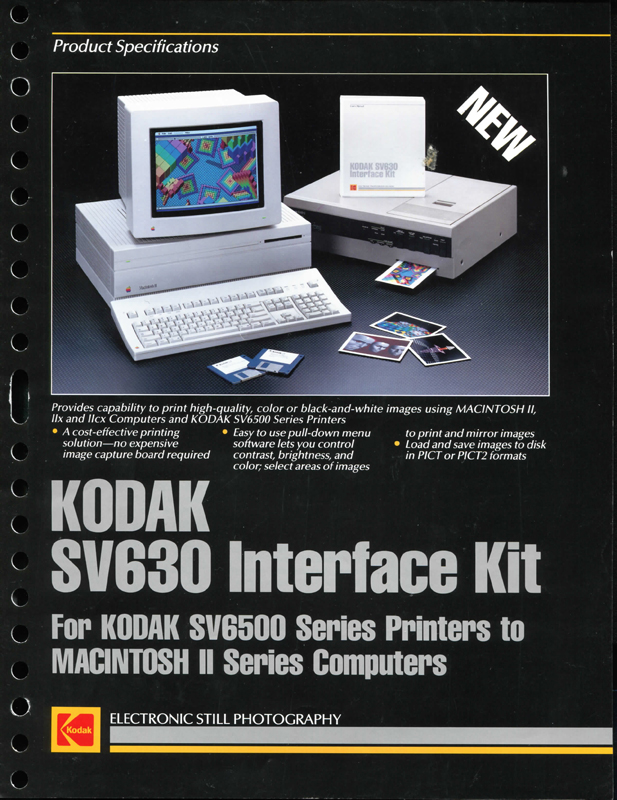 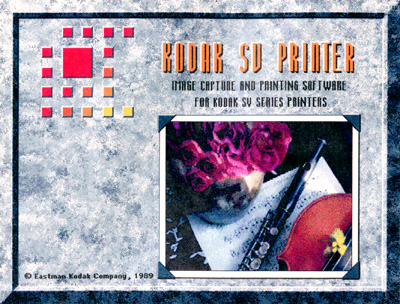 Click Image to View (requires PDF plugin) or Downlad a PDF of the full Document Much of the year was spent designing SV Printer and working with the software contractor, Tom Myers, on the software, (aside from playing with all my new toys). This was the first concept of mine to ship and Kodak's first digital imaging solution to ship. The SV630 Interface Kit consisted of a parallel IF NUBUS card which you plugged into one of the slots in your Mac II. A cable then connected that to the SV6500 printer. A Macintosh software application was then installed which allowed the user to not only make prints of images on their computer, but they could also hook a composite or RGB video source to the printer, capture a still with the freeze button on the screen and then upload it to the Mac for editing and saving. The first All-in-One input & hard copy output imaging device. Maine Photographic Workshops - 4th Photographic Congress - AugustThe Maine Photographic Workshops sponsors a "Photographic Congress every few years. This year Kodak planned to demonstrate the new SV630 IF kit at the event. I was going to be in Maine with the family on vacation, but offered to drive across the state to Rockport to demonstrate it myself, I really wanted to hear the first reactions to it. We'd set up a demo of the SV630 in what I think was the cafeteria. I remember spending quite a bit of time with Ted Orland and Pedro Meyer discussing the future potential of digital photography. They were amazed by the quality of the SV6500 prints I was showing them. I'd brought along a few images of my own to use in the demonstration, so we connected as artists. Pedro had just bought the latest JVC camcorder with a still capability which he later told me was now obselete after seeing the digital sample prints. I believe Ted took this photo of the Pedro and myself outside on the landing with Pedro's camcorder. I also met Rick Smolan and talked about digital photography and the possibilities. Then I gave a brief overview of thermal printing technology to John Sculley as he was preparing for his talk later in the day. I showed him some sample prints, from the as yet unannouced XL7700 Color Thermal Printer, I had brought along. He was impressed as he mentioned in his talk. 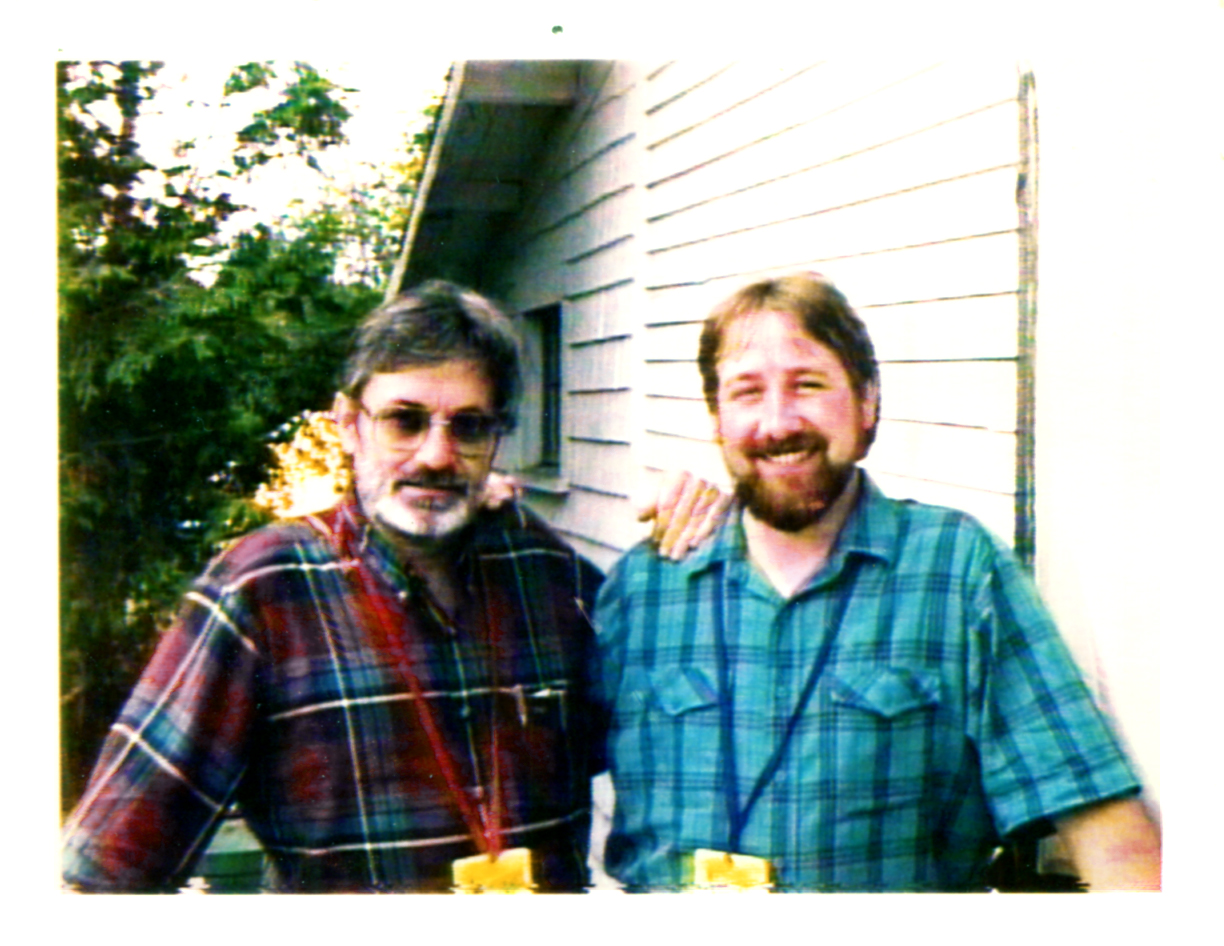 John Sculley was scheduled to talk about the future of photography and computing. It was an exciting and unnerving view of the future for many of the photographers in the room. John was trying to convince them that computers would make their lives easier, as I'd already discovered. Below is a copy of the speech that Sculley gave that day. After the talk, Mark Henry and I were walking the streets of Rockport discussing the talk and how computing would change photography. I shared with Mark, my dream of someday moving back to Maine to establish a digital photography workshop, possibly here in Camden. Born in Bangor, vacationing summers in Maine had been a constant throughout my life, and was where I preferred to do most of my nature/landscape photography. Mark thought it was a great idea, apparently so did Ray DeMoulin after Mark suggested it to him. John Sculley's Digital Photography Talk as transcribed by David Lyman, Director of the MPW. Click Link to View (requires PDF plugin) or Downlad a PDF of the full TranscriptDigital Interface for the SV5035 Slide to Video Device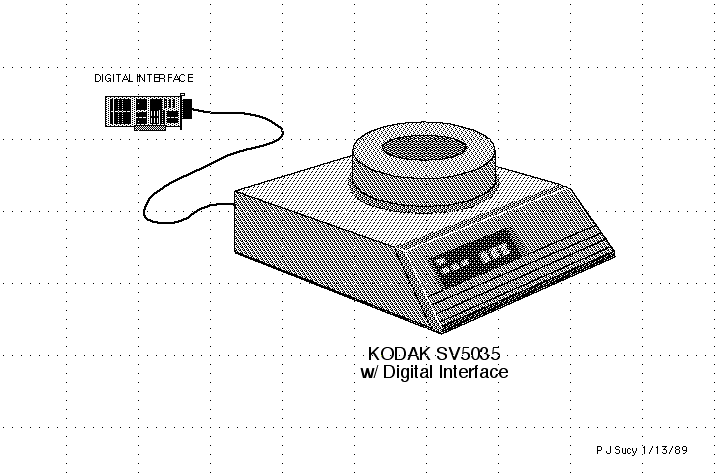
The project that never became a product. The SV5035 was a video slide carousel. A tray of 35mm slides could be placed on top of the unit and one at a time be imaged with a lens and video sensor and output a video signal that could be played on TV. This was seen as a great threat to the regular Carousel and Ektagraphic projector lines and was eventually killed. This was a proposal to try to update it to digital output, but that still didn't save it. It did lead to the first Kodak scanner, the RFS35. User Interface for RamCard Digital Camera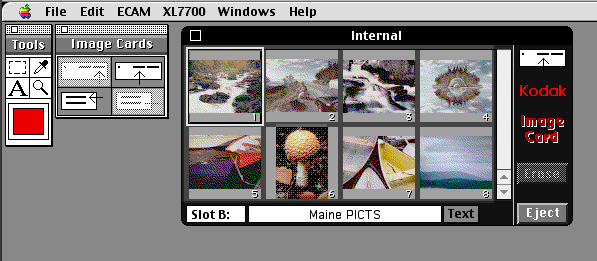
Turning the corner from analog to digital meant the Still Video Floppy was out. We were now considering RAM cards which we just beginning to appear for evaluation. These cards were destined for a new digital camera, code named ECAM. Rich, one of the camera engineers, asked if I could mockup a Macintosh interface for a digital camera/RAM card reader. The SuperCard user interface above is probably the first whack of what would eventually become the camera acquire module. It could display either thumbnails or a text list of the file names. Notice that I put an XL7700 menu item at the top. The idea was the app could also print to the XL7700 printer which about to be released. Unfortunately, without any driver software. Patent #5164831 - Electronic still camera providing multi-format storage of full and reduced resolution images.While we were working on the RAM card interface, we were trying to figure out how to create the thumbnails on the card and associate them with the larger image. I asked Dan and Rich the two engineers working with me, why not use the same method as the SV9600 transceiver did to create the initial low resolution image. Then I suggested utilizing the same file format the Macintosh was using to show thumbnails. One of them told me to write it up and submit a patent form. Since I was only a technician, it was required that an engineer be on the patent as well, so I selected Dan, who was in the office adjacent to mine and Steve's. Dan was an avid Mac & digital believer as well, and became among the first Mac programmers within Kodak. 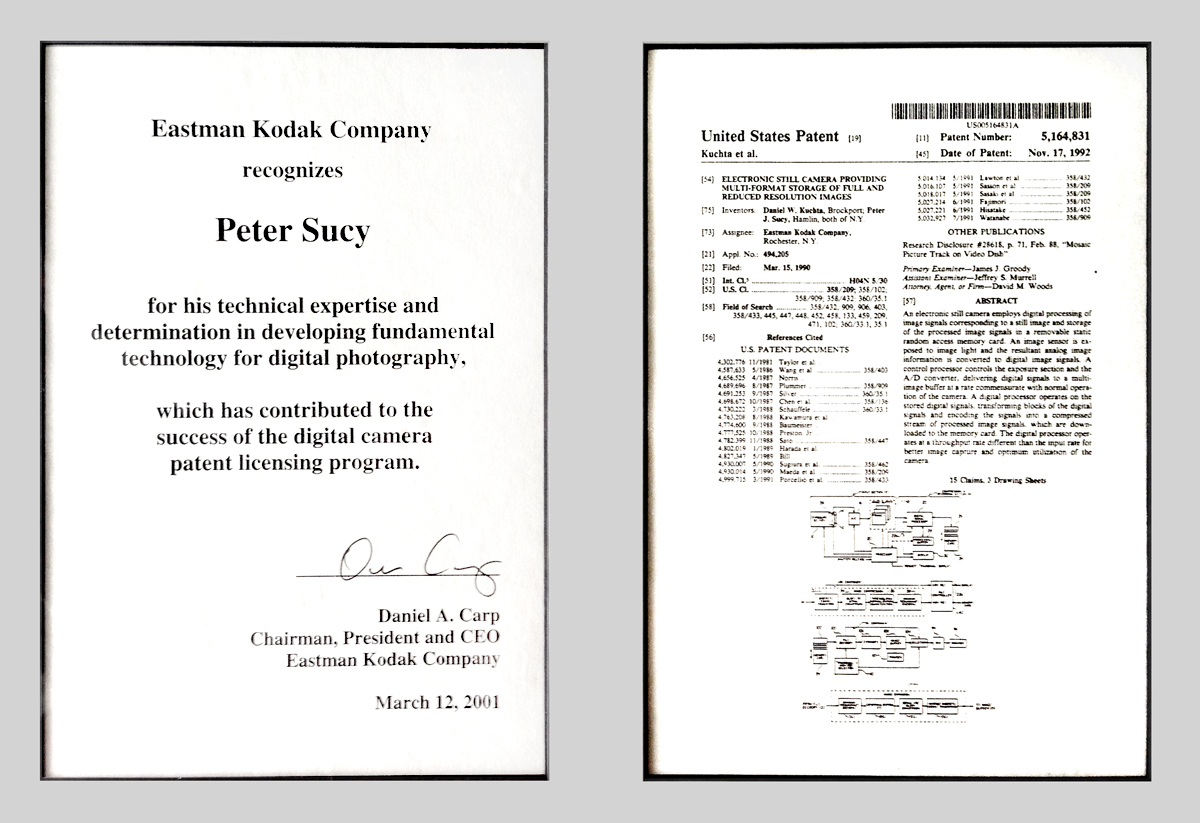
It would be several years before finally being blessed with a patent. I think I received $100 for the patent, in later years, Kodak would make millions from it and other early patents by members of our team. It was such a painful and distracting experience working with the patent lawyer over about a six month period and the reward so little. I decided to never submit another. I didn't really care about racking up patents as long as my goal was achieved. Someone else could write them up, I wanted to keep moving forward. There were new products, new ideas and new challenges to explore. I think I was a bit of a workaholic in those days, I would go home and continue to explore some more. It would eventually catch up with me. Sign This Form or Else!It was around this time that I was given an agreement to read and sign. The agreement would give Kodak sole ownership of any ideas I might come up with while working for them. The agreement was standard for those with a professional grade. Which, although I had a four year degree in Photography, I was still a technician because the degree was earned while I was working at Kodak. I was told, when I applied for a transer after I graduated, that, if I quit the company and reapplied, I might get a position with a professional grade. We just had our first child, and I felt I couldn't risk it. As a result, it took 10 years to make that step from tech to professional. I refused to sign, saying I would sign it, if they promoted me to a professional grade. Instead, I was threatened with losing my job if I didn't sign the agreement. I signed it, but wrote "under duress" in paranthesis next to it. I don't think that went over to well The only agreement I ever signed in that regard was in 1974 when I started working as a janitor. It wasn't the first time I'd been threatened with firing. I'd be threatened with firing again in 1995, and with a lawsuit in 2001. Management didn't like individuals who made too much noise or who spoke up trying to change the status quo. Ask my friend, Bruce. XL7700 Image Manager Printer Utility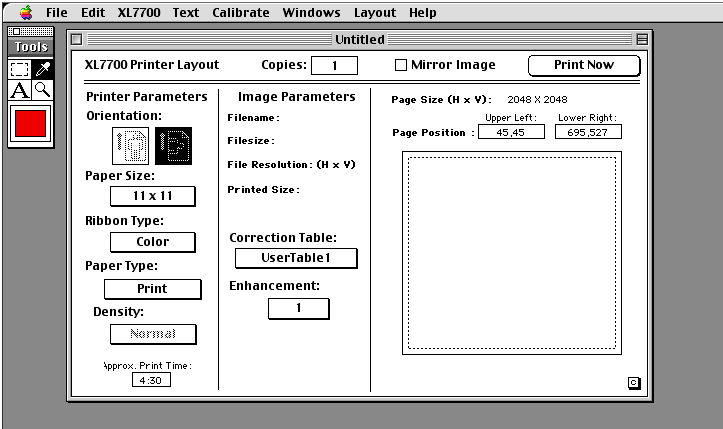 After gathering requirements for an application to drive the XL Printer, I came to realize it was going to be a daunting project. Besides paper size selection and image rotation (the original requirements), a page layout feature was desired to place multiple images on the page, as well color and tone correction, sharpening and the abiliity to download printer lookup tables into the printer. Bob Collette and I, worked with Tom Myers, a third party developer who developed a large number of Mac based projects for Kodak. He developed techniques to adjust curves, color and display the changes on the screen. It was amazing to see some of my ideas come to life. The goal was to have the final print look just like the image on the screen. A challenging task in the days before color management. . 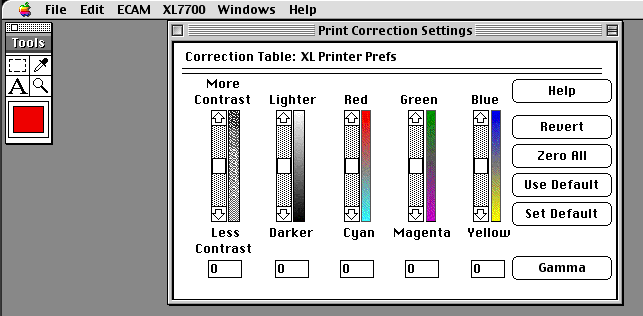
Again, I used SuperCard to mockup the user interface for what I called "Image Manager", my most challenging project to date. Still, it's not the way I would have preferred we had gone. I'd been pushing for a Mac chooser (system level) driver. so users could print from nearly every application. In the end, I estimated it might take us several years to develop a program this complex, they didn't want to hear that. 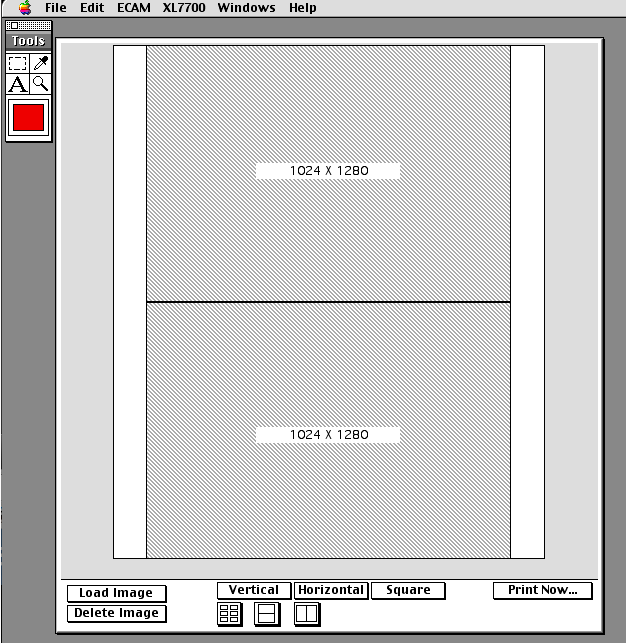
Image Manager would never see the light of day, thankfully. Stratavision 3D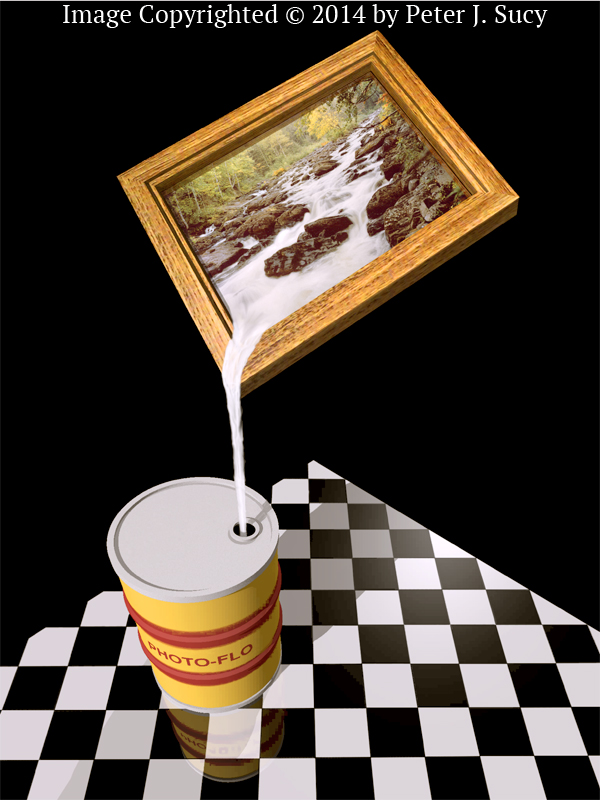 A friend in marketing brought back a copy of a new 3D program called StrataVision from MacWorld. Much easier to use than Dimensions, decent modeler and photorealistic rendering. With a interface very similar to BarneyscanXP (Photoshop) it became quickly familar, the latest version is still one of my most used 3D apps. 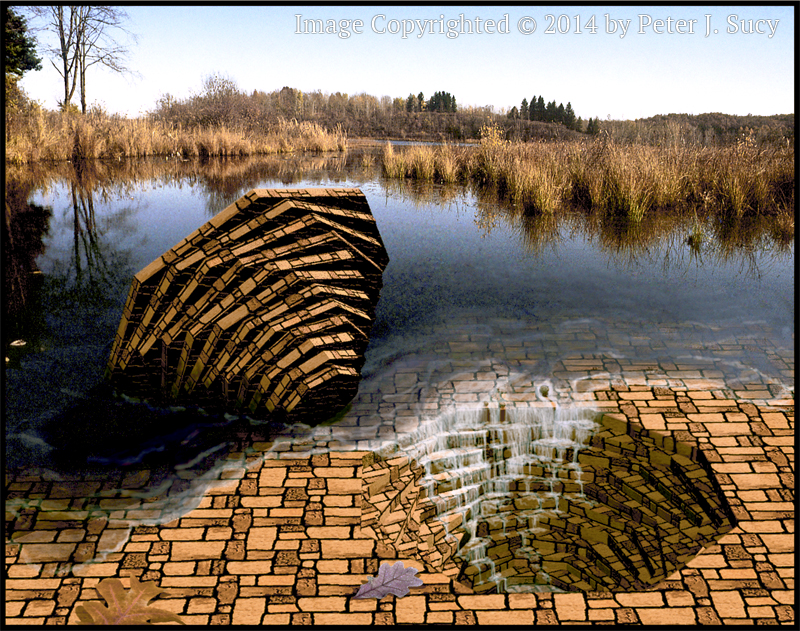
Over the next couple years I used it and Photoshop to create the images above.
|
